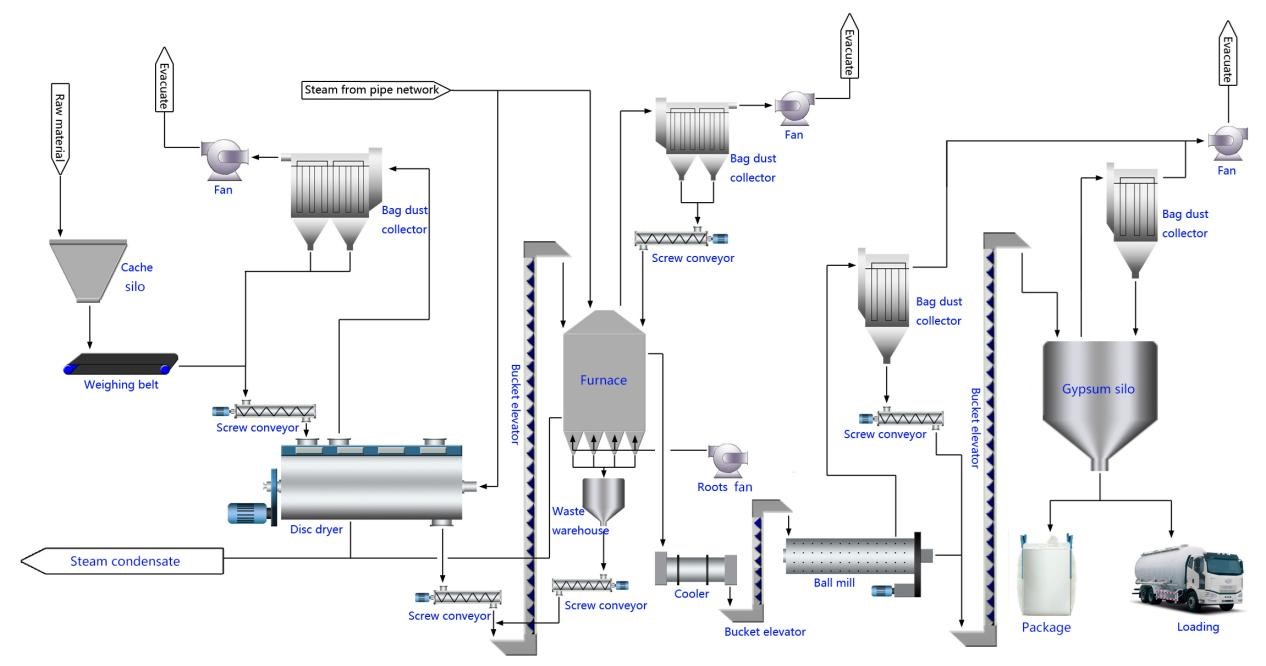

BLOG
Study of Desulfurized Gypsum Drying
Study of Desulfurized Gypsum Drying
13 March 2024
The desulfurized gypsum from power plant flue gas is the largest resource of industrial by-product gypsum. By adopting advanced processes such as drying and calcination, it is applied in gypsum block production, developing new types of wall materials, and expanding the construction market. This represents a new approach to utilizing desulfurized gypsum resources with promising prospects.

Desulfurized Gypsum Drying Process
TIC has rich experience in desulfurized gypsum drying, employing internationally advanced Mitsubishi technology, with small footprint and high heat exchange efficiency. The gypsum product's flexural strength can reach 3.0-4.0MPA. After desulfurized gypsum is conveyed to the raw material workshop, it undergoes screening and then enters the rotary disc dryer for drying after being uniformly weighed by belt scale. After drying, it is conveyed by screw conveyor and bucket elevator into the calciner for calcination into building gypsum. The building gypsum exiting the calciner is transported to the ball mill, where metal balls continuously impact it to achieve grinding and modification, before being stored in the building gypsum silo. The silo bottom is equipped with bulk and ton bagging machines, enabling three modes of shipment: bulk, ton bag, and small bag packaging.

Desulfurized Gypsum Drying Workshop
Functional features of TIC's disc dryer:
- Steam as the heat transfer medium can be used for both semi-drying and full drying processes, with a simple system and few auxiliary devices.
- Setting a carrier gas supply port makes exhaust gas discharge smoother, requiring less auxiliary air volume and smaller exhaust gas treatment equipment. Low oxygen content, temperature, and dust concentration during operation ensure system safety.
- The horizontal rotary disc dryer transfers heat through the shell, hollow shaft, and both sides of each vertical disc, with a large heat transfer area, compact structure, and small size.
- Inside the dryer, fixed long scrapers on the inner wall of the shell prevent gypsum from sticking to the discs, stirring and cleaning the disc surface. The gypsum, crushed and agitated, forms uniform granules, facilitating further processing.
- The dryer can handle heavy loads and maintain smooth operation even with uneven feeding, with low internal operating resistance and significantly reduced power consumption.
- The upper cover of the machine can be fully opened for maintenance.
- High reliability, minimal maintenance, good continuous operation, capable of running day and night for 8000 hours annually.
- In case of power outage, it can be emergency started under load with stable operation.
- Strong and durable construction.
As a professional disc dryer manufacturer and drying solutions provider, we would be pleased to advise you individually, and you are also welcome to send your inquiry to tic@tdgtic.com.



